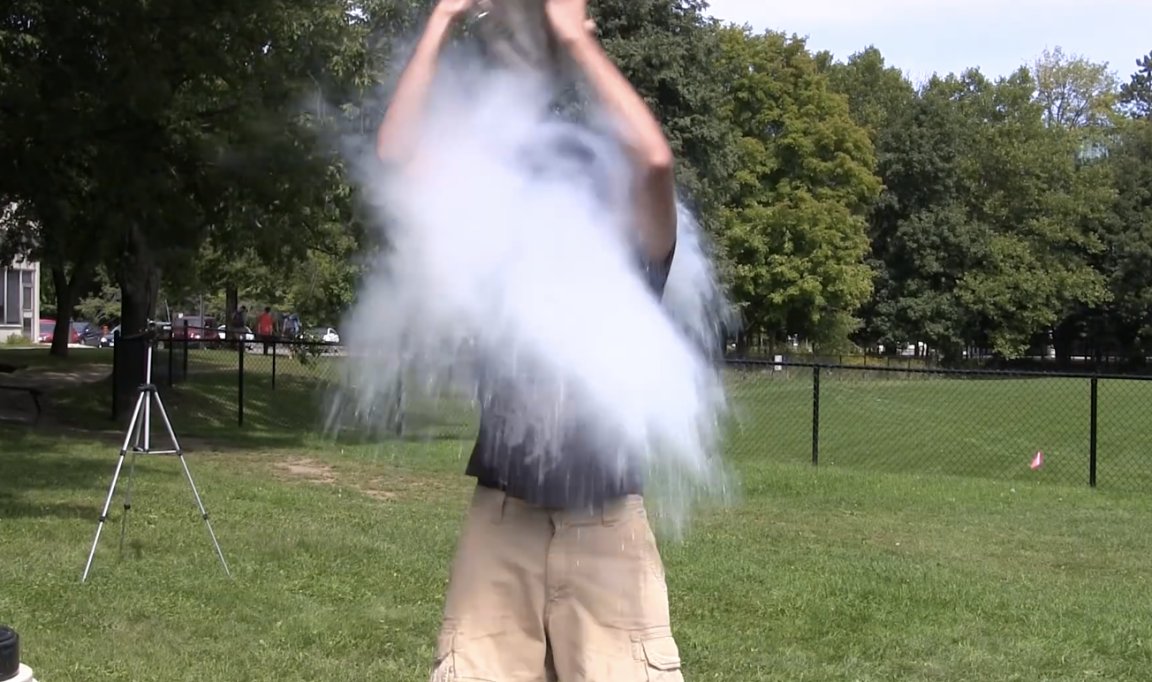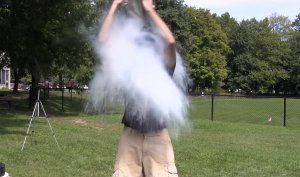

How would you like to stick your hand in a bucket of liquid nitrogen? Or, better yet, how about dumping liquid nitrogen on your head? There are lots of cool “party tricks” in science, and the Leidenfrost effect is one of them.
This year, the “ALS Ice Bucket Challenge” has gone viral. For those of you who don’t know, this is the basic idea: when you are challenged to take the challenge, you’re suppose to take ice water and dump it on your head. If done correctly, the numbing cold is suppose to give you an insight into what it’s like to have Amyotrophic Lateral Sclerosis (ALS). You’re, of course, suppose to film this process and then stick it on the internet for all to enjoy. Some takers of the challenge have tried to “spice it up” and do something a little different. Muhammad Queshi used science to make his one of the most interesting challenges on the web.
Instead of water, Qureshi used liquid nitrogen. This is extremely dangerous, so please don’t try it at home. Nitrogen boils at -195.8°C (-320.4°F), that means nitrogen goes from a liquid to a vapor at temperatures well below freezing. If a blob of liquid nitrogen had lingered in a spot for too long on Qureshi’s skin, it would have given him frostbite (at least). Secondly, if the nitrogen boiled off too aggressively while Qureshi was unprepared, a cloud of vapor could have formed a near his head causing him to asphyxiate and possibly pass out (which would have surely resulted in him getting some frostbite).

Fortunately, Qureshi was able to attempt this stunt because of the Leidenfrost efect. As Princeton University explains,
The Leidenfrost effect is a phenomenon in which a liquid, in near contact with a mass significantly hotter than the liquid’s boiling point, produces an insulating vapor layer which keeps that liquid from boiling rapidly. This is most commonly seen when cooking; one sprinkles drops of water in a skillet to gauge its temperature—if the skillet’s temperature is at or above the Leidenfrost point, the water skitters across the metal and takes longer to evaporate than it would in a skillet that is above boiling temperature, but below the temperature of the Leidenfrost point. The effect is also responsible for the ability of liquid nitrogen to skitter across lab floors, collecting dust in the process. It has also been used in some potentially dangerous demonstrations, such as dipping a wet finger in molten lead or blowing out a mouthful of liquid nitrogen, both enacted without injury to the demonstrator.
*Again, don’t try this at home
**FQTQ supports efforts and research to cure ALS, we ask that you do your own research before donating money to any people or organizations.